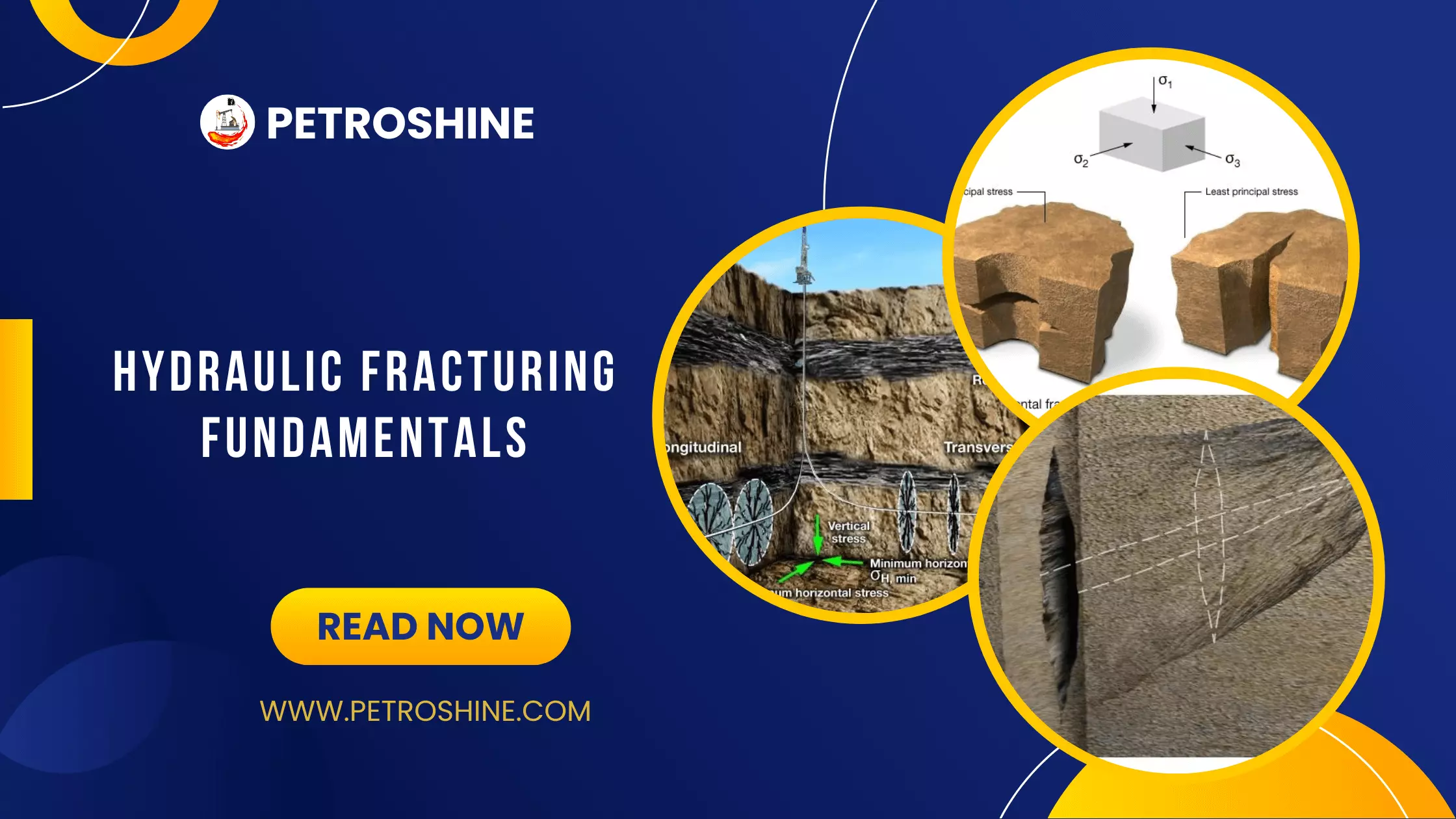Laboratory Testing of Rock Strength
Knowledge of rock strength is fundamental to analysis and modeling of earth stress, wellbore stability, solids production, and hydraulic fracturing. The two most common methods for measuring rock strength are the triaxial test for compressive strength and the Brazilian test for tensile strength. Following is a review of these tests and a description of how these data are used to construct a Mohr-Coulomb failure envelope.
Compressive Strength
The Mohr-Coulomb failure envelope defines the pressure dependence of rock compressive strength and is constructed from compressive strength measured in a triaxial test apparatus. Ideally, strength is measured at three or more different confining pressures. The range of pressures depends on the confining stress that a rock may be expected to experience under operational conditions. The range of confining stresses must represent in-situ effective stresses in the reservoir as well as near wellbore stress concentrations. For sedimentary rocks of interest to the petroleum industry, the confining pressures range from a low of 0 MPa to a maximum of about 100 MPa.
Assuming rock is isotropic, one core sample per confining pressure is required for a standard test. If a rock is known or assumed to be anisotropic, strength must be measured on plugs cut along the axes of material symmetry. In the case of a TI material, plugs are cut parallel and perpendicular sedimentary layering.
Three Plots of Compressive Strength Test Data
Figure 1 shows results of a compressive strength test, run on a sample of shale at three confining pressures: 0 MPa, 20 MPa (2900 psi), and 40 MPa (5800 psi). Note strength increases with increasing confining pressure.

Figure 2 shows these data plotted on a Mohr’s circle diagram. Each Mohr circle represents a strength measurement where the minimum normal stress is the confining stress, ![]() , and the maximum normal stress is the peak strength,
, and the maximum normal stress is the peak strength, ![]() . A straight line Coulomb failure envelope is drawn for reference.
. A straight line Coulomb failure envelope is drawn for reference.

Figure 3 shows the same peak strength data plotted in ![]() space. Straight line and power law curves have been fitted to the data. The linear fit captures the trend of increasing strength with increasing confining pressure but the power law fit captures the concave downward character of the data. Differences between these two types of envelopes are more pronounced in weaker rocks and when the confining pressure range is large.
space. Straight line and power law curves have been fitted to the data. The linear fit captures the trend of increasing strength with increasing confining pressure but the power law fit captures the concave downward character of the data. Differences between these two types of envelopes are more pronounced in weaker rocks and when the confining pressure range is large.

Unconfined Compressive Strength
The unconfined compressive strength (UCS) is a parameter frequently found in geomechanic applications. Along with friction angle, it is one of the two parameters used to estimate rock strength from geophysical data. UCS is measured directly in triaxial compression tests when the effective confining pressure is ![]() . It can also be estimated from curve fits to experimental strength data when direct UCS measurements are not available for example in a multi-stage test. Referring again to Figure 3, UCS is the peak strength,
. It can also be estimated from curve fits to experimental strength data when direct UCS measurements are not available for example in a multi-stage test. Referring again to Figure 3, UCS is the peak strength, ![]() MPa at
MPa at ![]() . Notice that the linear fit over-estimates UCS. The difference is not pronounced here but it can be significant in other cases. The fitted UCS is typically an over-estimate of the measured value.
. Notice that the linear fit over-estimates UCS. The difference is not pronounced here but it can be significant in other cases. The fitted UCS is typically an over-estimate of the measured value.
Friction Angle
Friction angle defines the dependence of compressive strength on confining pressure. It is used with UCS to estimate rock strength using geophysical data. The greater the friction angle, the greater the rate of increase of strength with confining stress. The friction angle is obtained from the failure envelope’s fit to rock strength measurements (Figure 3). Two measures of friction angle are the average friction angle and the tangent friction angle. The “average” friction angle, ![]() , is calculated from the slope of the straight line fit to measurements of peak strength vs. confining pressure using the following equation:
, is calculated from the slope of the straight line fit to measurements of peak strength vs. confining pressure using the following equation:
![]()
Referring to Figure 3, the average friction angle for this shale is 22 degrees. The tangent friction angle is the slope of the tangent to the failure envelope at a particular confining pressure. It can be seen, by inspection, that the tangent friction angle is greatest at low confining pressure and decreases with increasing confining pressure. Table 1 compares the average friction angle to the tangent values over a range of confining pressures.
| Method used to determine Friction Angle | Friction Angle (degrees) |
|---|---|
| Average | 22 degrees |
| Tangent: | 39 |
| Tangent: | 18 |
| Tangent: | 13 |
Tensile Strength
The Brazilian test is the most common method of measuring tensile strength. This method is popular because of easy sample preparation and because tests are run at atmospheric pressure using a simple bench top test apparatus (Figure 4).

The standard sample is a rock disc cut from whole-diameter (D) cores. A thickness ![]() to diameter ratio of 0.5 is standard; however, a value of 0.25 has also been recommended. The disc is placed in a press that applies a point load,
to diameter ratio of 0.5 is standard; however, a value of 0.25 has also been recommended. The disc is placed in a press that applies a point load, ![]() , along a diameter of the disc. At
, along a diameter of the disc. At ![]() , a mode 1 tensile fracture initiates at the center of the disc and propagates in the direction of the applied load. Tensile strength is computed using the following formula:
, a mode 1 tensile fracture initiates at the center of the disc and propagates in the direction of the applied load. Tensile strength is computed using the following formula:
![]()
A less common method used to measure tensile strength is the direct pull test (Figure 5). Test specimens are machined into a “dog bone” shape to force a mode 1 fracture to initiate at the center of the sample. For this reason, direct pull tests are only suitable for rocks that are strong enough to withstand machining. The tensile stress at failure is the tensile strength ![]() .
.

 Petro Shine The Place for Oil and Gas Professionals.
Petro Shine The Place for Oil and Gas Professionals.



